Jordan River Border Crossing
After two long years where many countries were hard to visit, and Israel was - to all intents and purposes - closed to visitors and tourists - we’re perhaps seeing a chink of light at the end of the tunnel. COVID rates are down, regulations are being relaxed and, once more, countries are opening to business, including us!
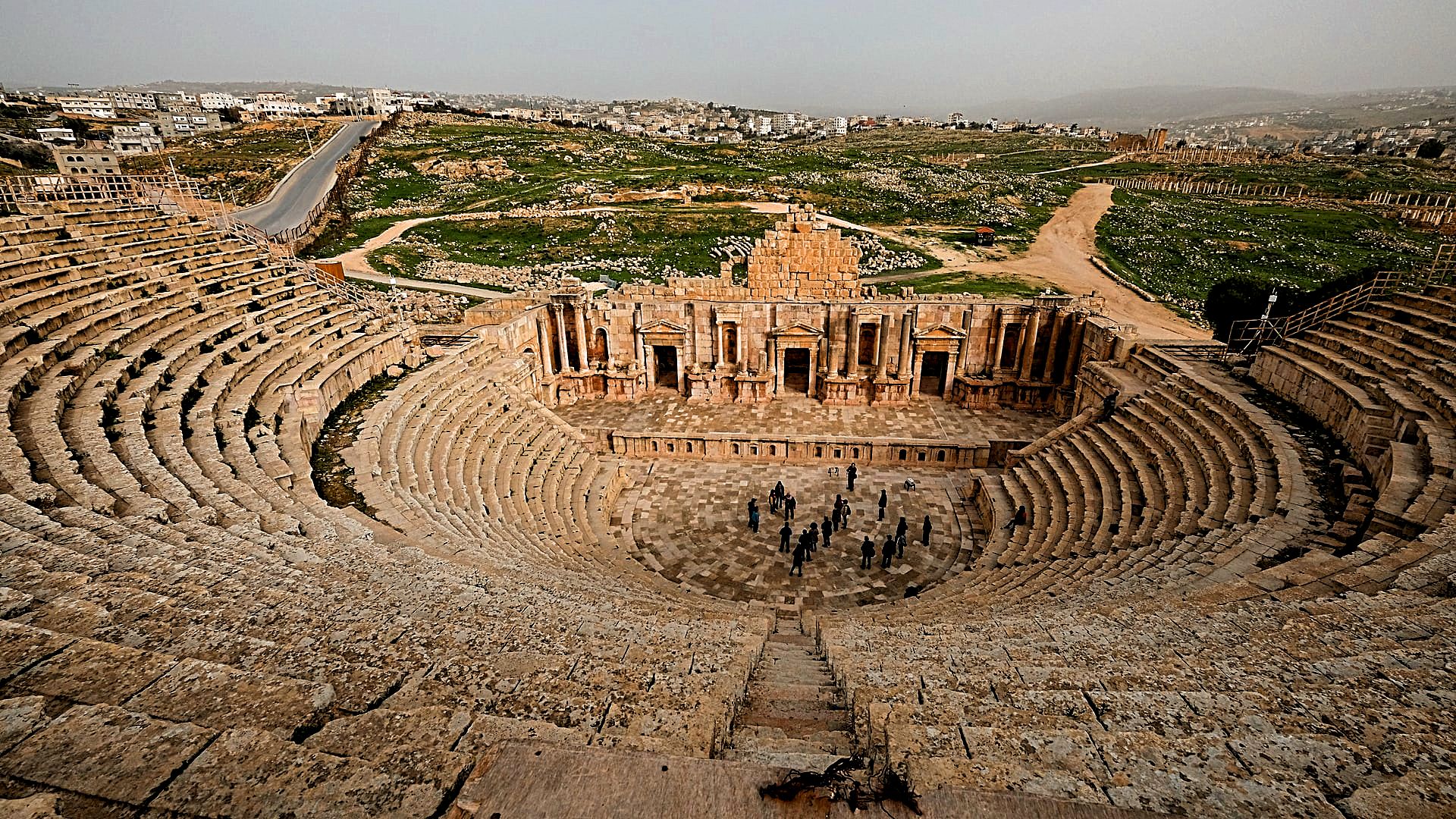
North Theater of Jerash, Jordan. Photo by Chijui Yeh on Unsplash
Here at Bein Harim, we’re slowly returning to normal with the operation of our many Israel and Jordan tours and it’s a good feeling to see them running again - whether they’re daily, weekly, private, or entail crossing a border. In the case of 3-4 day Jordan packages, which we’re discussing today, even as we go to press, it’s not entirely clear how many different kinds of trips to Petra From Israel we’ll be offering in the near future, but rest assured there will be many!
For anyone travelling to Jordan (whether in a group or independently), the lost city of Petra, with its feats of Nabatean engineering and beautiful coloured rock formations, has got to be the highlight of a trip. But it’s not the only place worth visiting in Jordan - there’s also the desert of Wadi Rum (made famous by Lawrence of Arabia), the capital Amman and the Greco-Roman city of Jerash.
So, to recap, the good news is that if you’re heading to the Levant, it’s now possible to freely travel both in Israel and Jordan. Today, we’re looking at one of the three border crossings between Israel and Jordan - the one furthest north named Sheikh Hussein, which is probably the quietest of the three in Israel but still used on a regular basis.

The Treasury, Petra, Jordan. Photo by Brian Kairuz on Unsplash
Where is the border crossing of Sheikh Hussain?
The border crossing of Sheikh Hussain lies on the outskirts of the city of Beit Shean, in the Jordan Valley in northern Israel. To drive there from either Jerusalem or Tel Aviv takes approximately two hours.
What hours is the border crossing between Israel and Jordan open?
The Jordanian border crossing here is open seven days a week, year-round, save for two days - Yom Kippur (the Jewish people’s most holy day) and the first day of Id El Hijra, the first day of the Muslim New Year. Specific hours are: Sunday - Thursday: 08:00- 18:00ִִ; Friday: 8:00 - 18:00; Saturday: 08:30hrs - 18:00.
Do I need a visa to enter Jordan?
The answer is yes, a visa is usually required if you want to travel to Jordan. However, the good news is that it is easily obtainable and can be purchased at the border crossing itself. So obtaining a visa for Jordan is really not too difficult. Here’s the lowdown:
For most tourists of western countries, conditions to meet are quite simple. You must have a passport that is valid for at least six months beyond the time you are planning to stay, and at least two blank pages in your passport that officials will use for stamps.
For citizens of other countries, including South Africa, Indonesia, Ecuador and states that make up the Gulf Cooperation Council (GCC), visa-free travel is granted, for periods of time that range from one to three months.
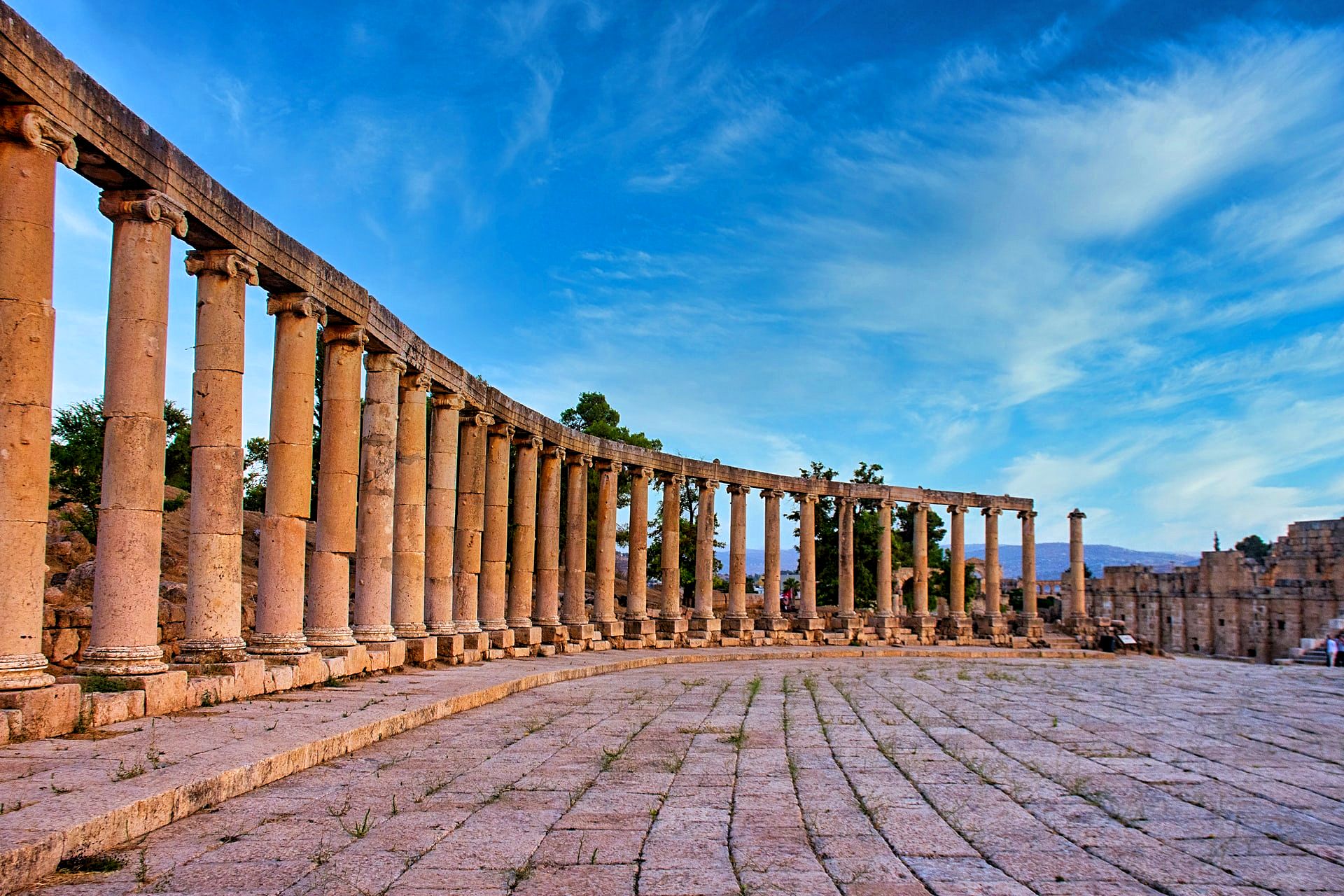
The ruins in Jerash, Jordan. Photo by Hisham Zayadnh on Unsplash
How much does a visa for Jordan cost?
At present, the cost of a single-entry visa to Jordan, valid for one month, is 40 Jordanian dinars (JOD) which comes out to approximately $56. A double-entry visa, which is good for three months, will set you back 60 JOD (approx. $84) and if you need to travel back and forth regularly, then you may want to purchase a multiple-entry visa which costs 120 JOD (approx. $170).
How do I travel independently to the Sheikh Hussein border?
If you are not travelling to Jordan as part of an organised tour, then - to be honest - this is probably not the best border crossing for you to use, since it is the furthest distance from Petra of the three, and also not easily accessible by public transport. However, it is possible. From Jerusalem, you can take Egged bus 961 from the Central Bus Station, which takes 1 hour 50 minutes. If you prefer things to be organized for you, just take a Jerusalem to Petra tour.
From Tel Aviv, you can catch the 843 bus from the Central Bus Station on Levinsky Street - it is a huge building, and you should head to the 7th floor. The journey will take 1 hour 55 minutes. Arriving from either of these cities, you will be dropped off in the centre of Beit Shean and from there you will have to take a taxi to the border - this should cost you around 50 NIS ($15). If you are driving in your own car, it is possible to leave it at the nearby Kibbutz Maoz Haim, which costs approx. 40 NIS per day in parking fees.
There is also a bus service that runs three times each week, from Nazareth to Amman. Operated by Nazarene Tours, it is a cheap way to get to the capital since it only costs around 80 NIS one way. The bus leaves Nazareth at 08.30 and, traffic and border controls permitting will have you in Amman by 14.00.
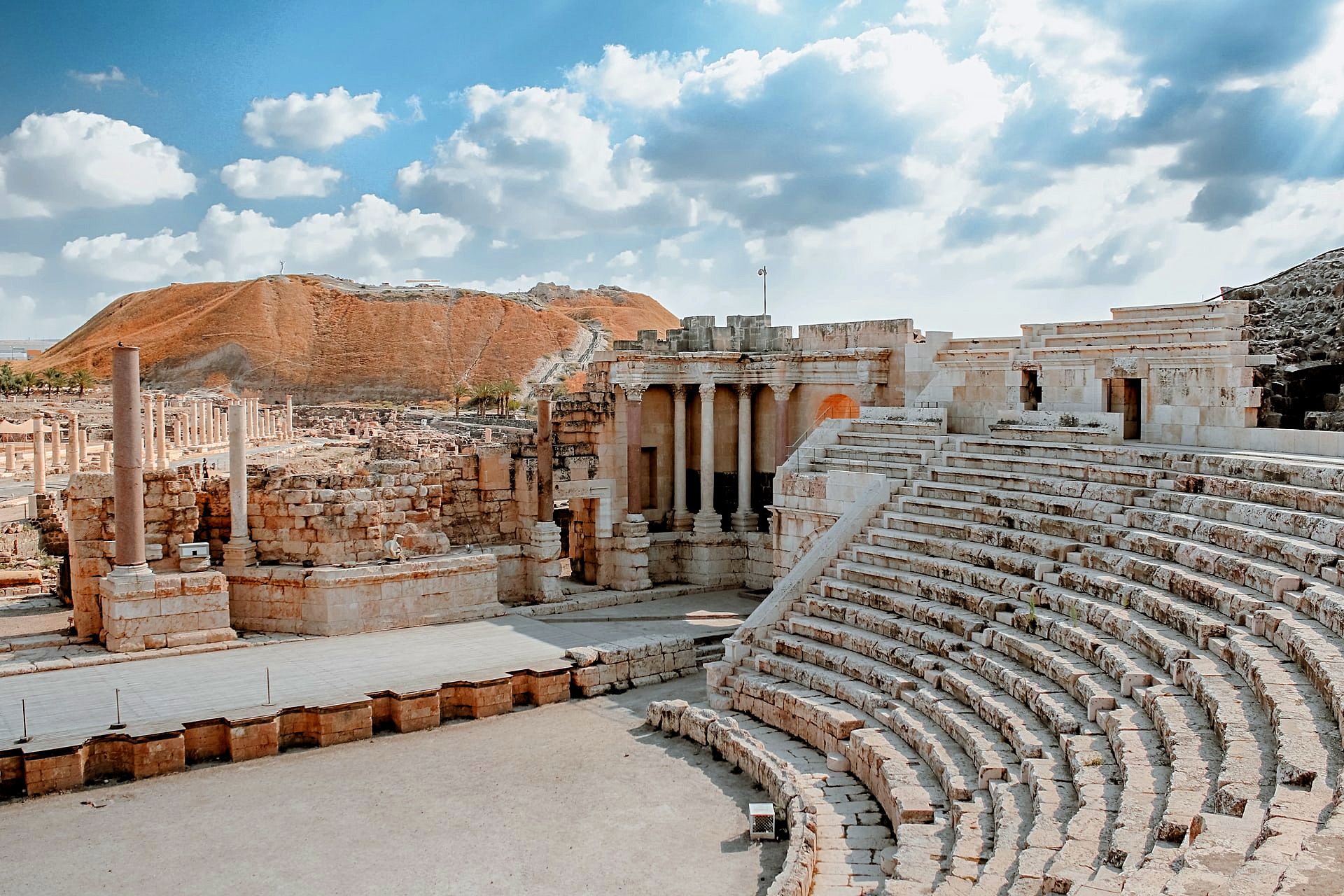
Beit Shean, not far from Sheikh Hussein Border Crossing, Israel. Photo by Briana Tozour on Unsplash
What Facilities are there at the Sheikh Hussein Border Crossing?
Facilities are quite minimal - there is no bank and no major eateries, so come prepared with your own snacks and lunch. There is a small Currency Exchange where you can exchange notes. There is also a Duty-Free at the crossing, on the Israeli side. The terminal is wheelchair accessible and all staff speak good English. If you’ve forgotten snacks, there is a machine where you can purchase sweets, fizzy drinks, water, etc.
What is the Procedure for Crossing the Border into Jordan?
Whether you are travelling independently or as part of an organised tour, you will have to pay an exit tax to Israeli officials which stands at 107 NIS (about $30). Your passport will then be stamped and you will be free to continue on your way. You will then need to take a shuttle to the Jordanian side (walking is not an option) which costs 5 NIS (just under $2). Make sure you have this money in small change and give it to the driver of the shuttle.
The shuttle will take no more than 3 minutes and will leave you on the Jordanian side of the border. There, you will be met by a Jordanian, English-speaking representative that works with your tour company and they will assist you, by taking your passports and organising the processing of your group’s visas. Once this is complete, you will soon be on your way. Please note that if you have dual nationality, between Israel and another country, you must use your Israeli passport to cross the border.
If you are not in a group, after formalities have been carried out, you will find yourself in a deserted open space with just a few taxi drivers, all hungry for your business. There are no public buses from the border onto any Jordanian cities (Amman or otherwise) so you are really at their mercy - of course, they also want you to take their car, so it is possible to haggle about the price of a cab to the capital. In general, you should be prepared to pay around 50 JOD ($70) for this 90 km drive.
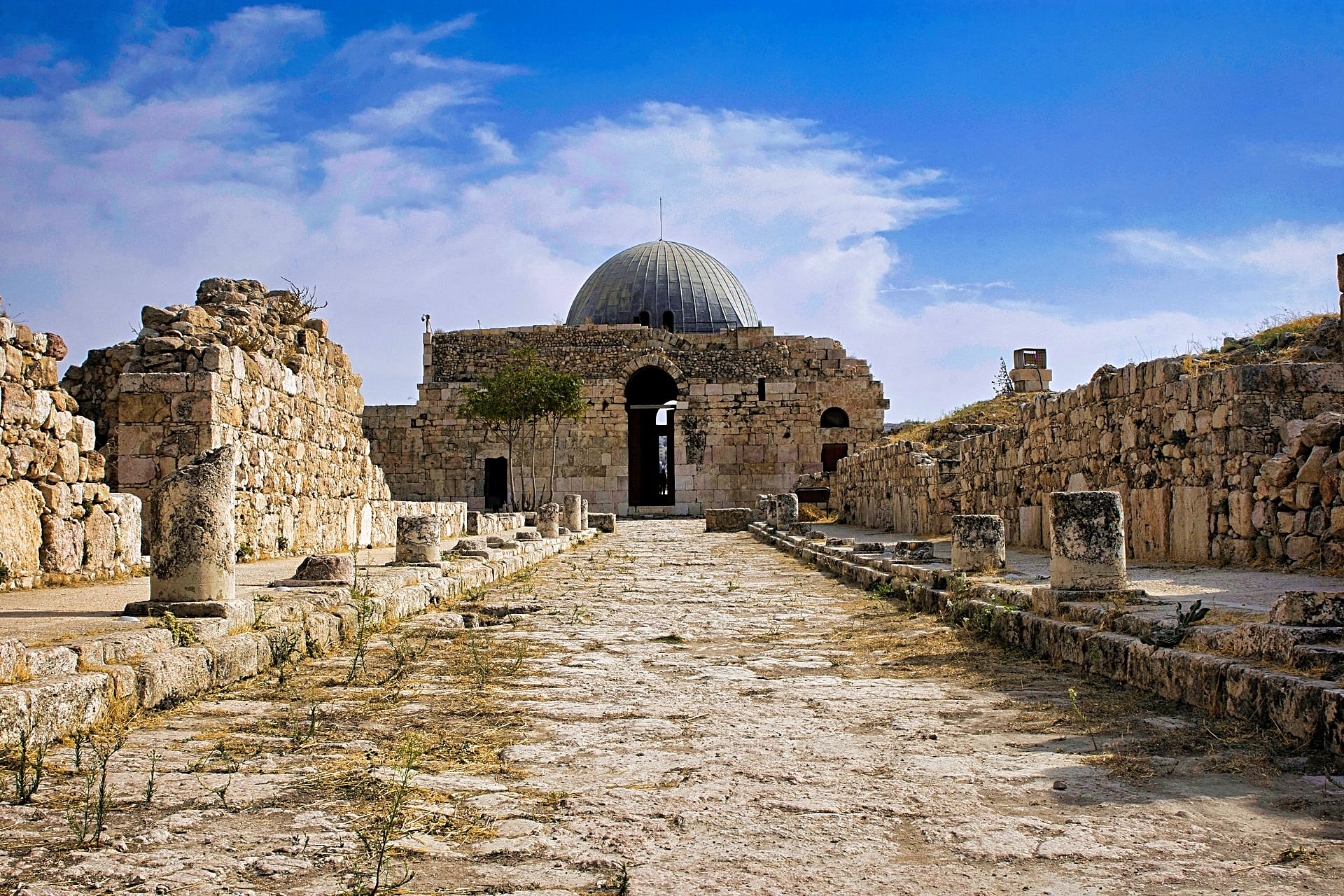
Amman Citadel, Jordan. Photo by Hisham Zayadnh on Unsplash
Do I need to take a PCR test before leaving Israel for Jordan?
Since yesterday, the regulations for COVID testing have been updated, both by Jordan and Israel. As things stand, this is the procedure you must follow:
1. You MUST be in possession of valid personal health insurance that covers COVID-19 treatment for the entire period of your visit to Jordan.
2. Before arriving at the border, you must visit the Gateway to Jordan platform to register your details online, filling in all the relevant information. Once you have done this, a confirmation will be issued to you by email/cellphone, containing a QR code. It is imperative that you understand that without this QR code confirmation, you will not be allowed to enter Jordan.
3. No PCR test is required if you are making a short trip, but if you are staying longer than 72 hours in Jordan you may be required to take a test.
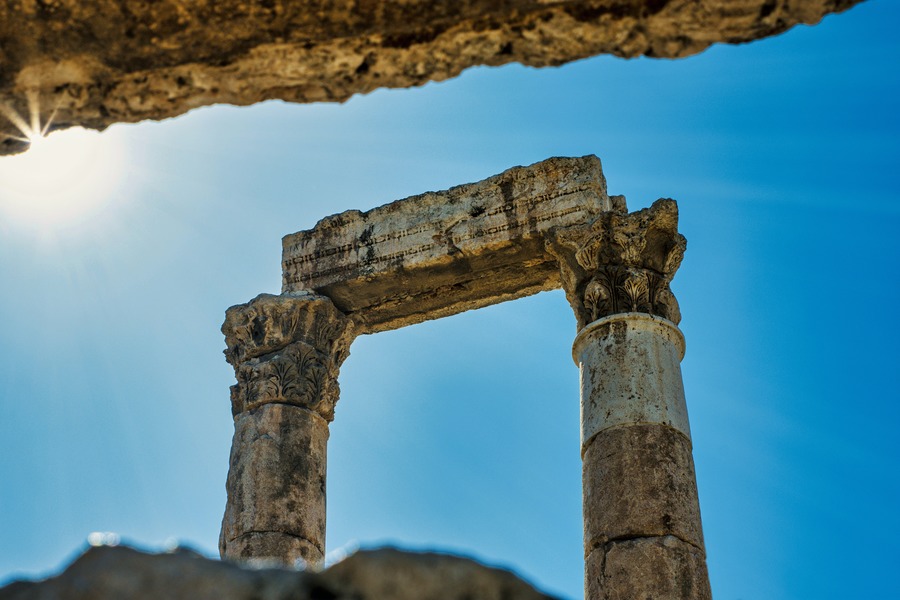
Ruins of Amman Citadel, Jordan. Photo by Hisham Zayadnh on Unsplash
Crossing from Jordan via the Sheikh Hussein Crossing, back into Israel
The first thing that is worth mentioning is that the longer you’ve stayed in Jordan, the less you will have to pay in departure taxes. No doubt this is to encourage people to book hotels and spend money in restaurants. The departure tax will be around 10 JOD (14 USD), depending on how many nights you’ve stayed in the country. If you have stayed more than three, it will be exempt.
Whilst restrictions have been eased substantially since the beginning of the COVID pandemic unless you are an Israeli citizen you will still need to take a PCR test before you leave Jordan and once arriving in Israel. Here is the procedure:
1. Two days (48 hours) before your planned arrival, fill out Israel’s entry statement form. In it include your personal information, and sign the health declaration.
2. Take a PCR test in Jordan, any time up to 72 hours before your arrival in Israel. This should cost you around 20 JOD (28,5 USD).
3. Pay in advance for the PCR test you will be required to take on arrival at the Israel border. This will cost you 80 NIS (25 USD) if you pay in advance, 100 NIS (31 USD) if you pay on the spot with a credit card and 115 NIS (36 USD) if you wish to pay in cash.
4. Once you have left Jordan, and arrived in Israel, wait to take your test and then travel directly to your hotel, apartment or place of residence where you should enter isolation. Wait until your result is proven to be negative, or that 24 hours have passed before you venture outside.
Please note that these rules and regulations are changing regularly and that they are subject to change at any time. If you are interested in tours to Petra and Jordan, feel free to contact us.
 Login / Register
Login / Register
 Contact Us
Contact Us
 Certificate of Excellence
Certificate of Excellence Guaranteed Departure
Guaranteed Departure Low Prices Guaranteed
Low Prices Guaranteed 24/7 Support
24/7 Support




